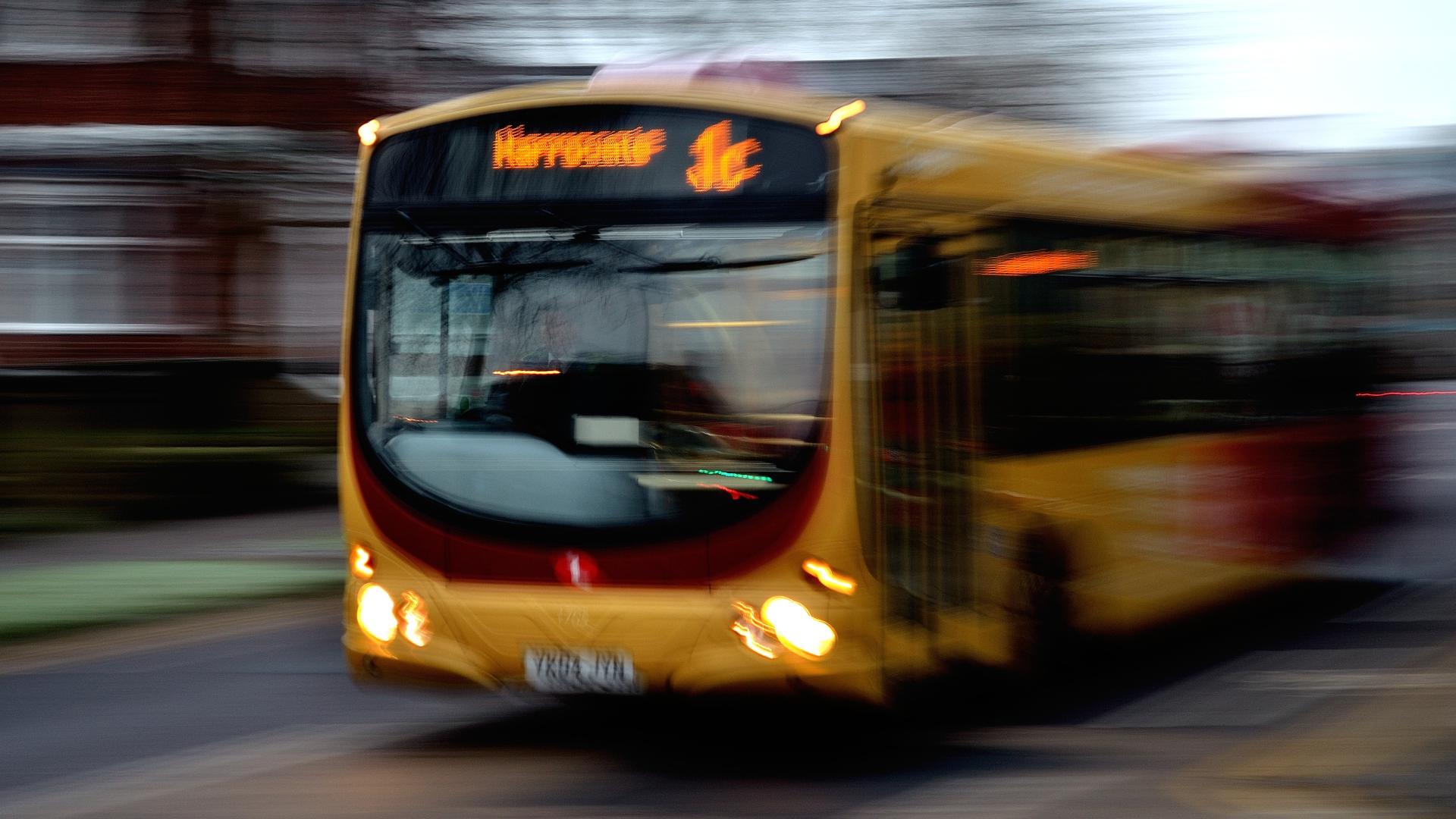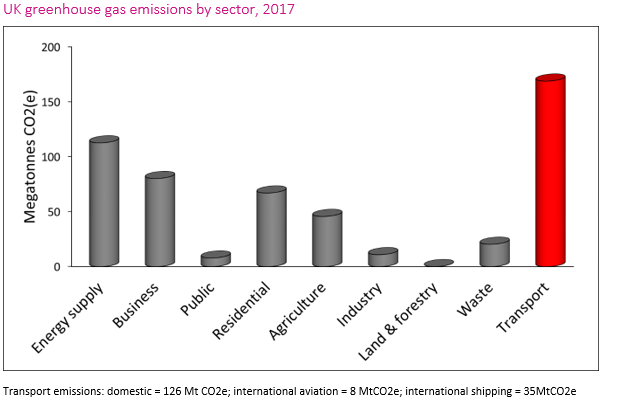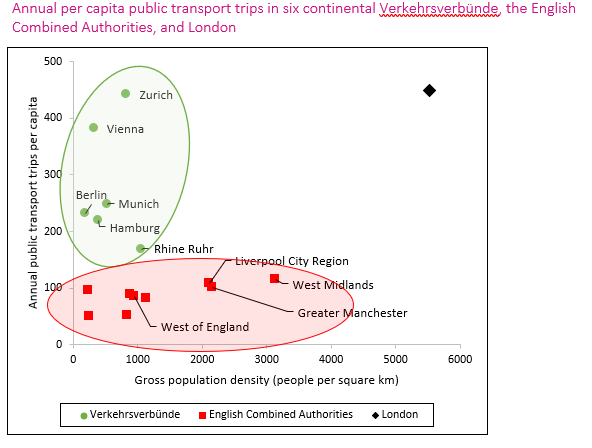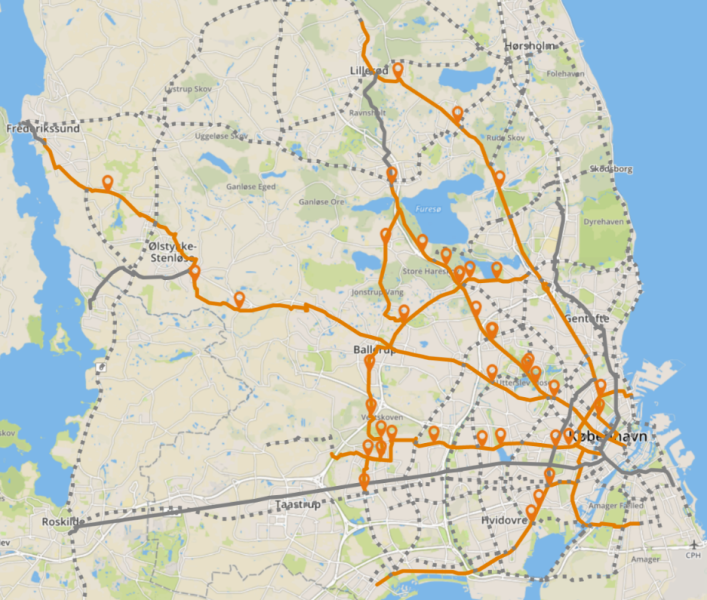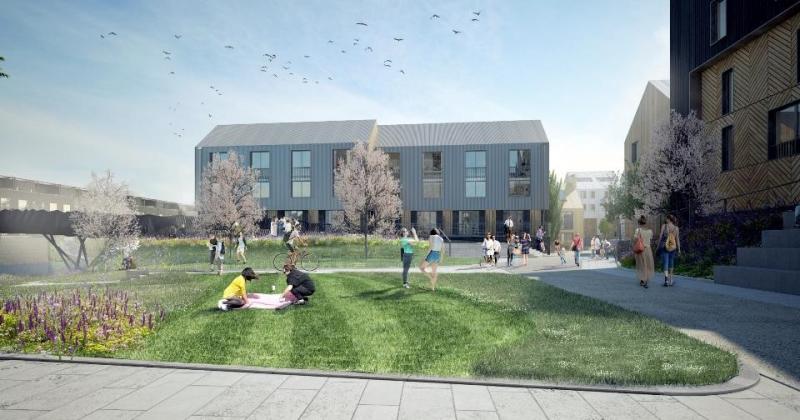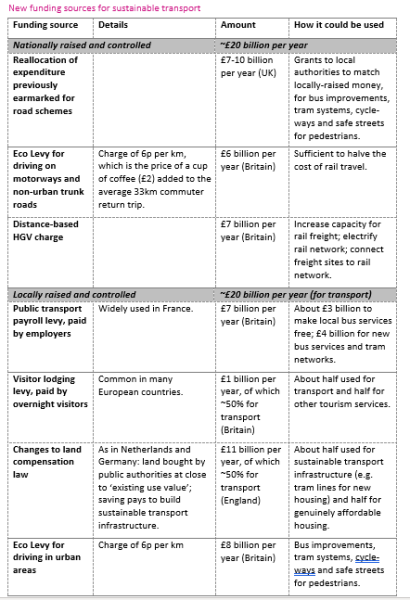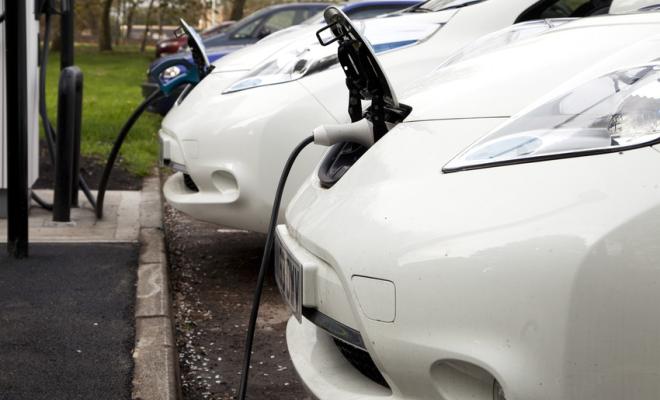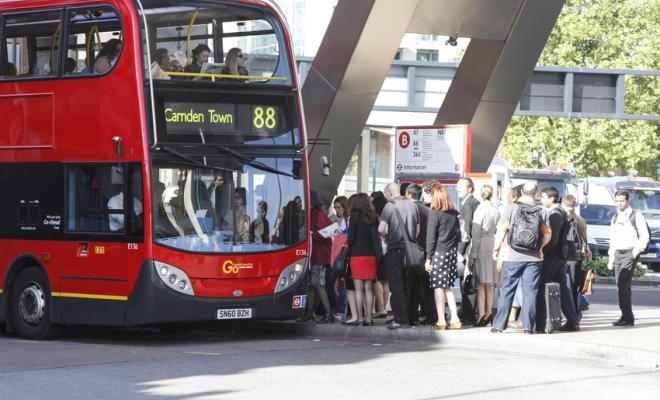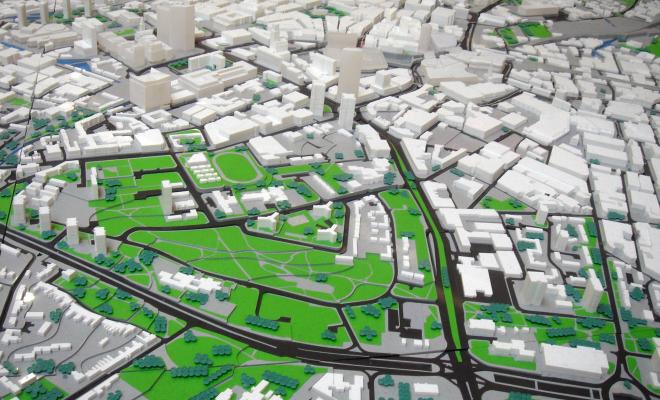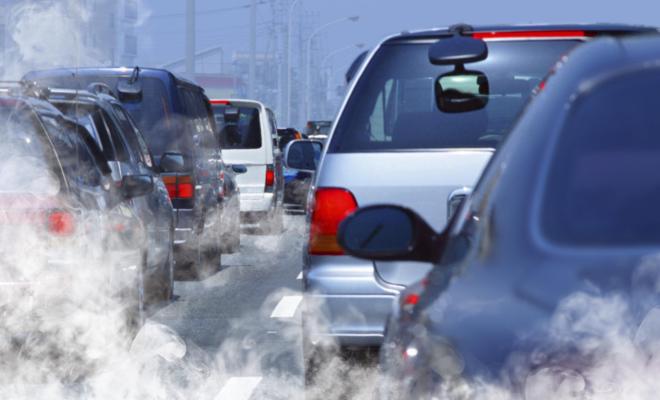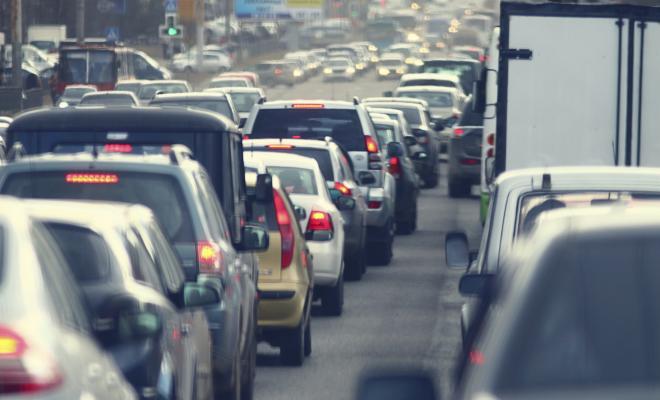Lynn Sloman and Lisa Hopkinson, Transport for Quality of Life26 Oct 2019
Summary
This paper - written by Transport for Quality of Life and endorsed by Friends of the Earth and Greenpeace - argues that we have to think afresh about the right transport policies to meet the climate emergency. Technical measures are necessary but not enough to achieve the large and rapid reduction in carbon emissions that are needed. Climate scientists are warning that we also have to make substantial changes to our travel behaviour - driving less and flying less. Because we have left it so late, steady incremental changes in our travel patterns will not be enough.
Most transport policy experts are unaware of the degree of urgency that climate scientists are trying to communicate. There is an almost complete policy disconnect between our two worlds. But it is transport policy experts who must now develop the strategies that can deliver transport carbon reductions for a safe planet. This overview paper, and the eight preceding detailed papers, are an attempt to outline the practical immediate actions that must form part of that strategy.
The eight in-depth papers written by Transport for Quality of Life for Friends of the Earth, on which this paper is based, are available in PDF here and on-line versions are at the bottom of this article. Full references are provided in the in-depth papers. A PDF of this final paper is available here.
The scale of the challenge
Transport is now the UK’s biggest contributor to climate change. Whereas in 1990 it accounted for less than a fifth (19%) of UK greenhouse gas emissions, it now accounts for more than a third (34%), and transport carbon emissions are flat-lining or even rising. Government departments responsible for every other sector of the economy have cut carbon, but the Department for Transport (DfT) has gone rogue, pursuing policies that actively make things worse while being unambitious about the policies that could make things better.
A policy prescription for slow, steady carbon reduction that might have been sufficient 25 years ago is no longer fit for purpose. Because we have left it so late to tackle carbon emissions from transport, we now have to take urgent action. Climate scientists are warning that the carbon targets set by the Committee on Climate Change are too lax and that we need to reach net zero emissions much sooner1, 2. But there is an almost total policy disconnect between the advice of these climate scientists and the thinking of the transport policy community, which is working on the relatively comfortable assumption - because it seems so distant - that we have until 2050 to get transport carbon emissions down to zero.
The current DfT carbon strategy is focused on electrifying the vehicle fleet, while still allowing traffic volumes to grow, building roads and expanding airport capacity. But if only 50% of new car sales are electric by 2030 (which is the government’s current aim), car mileage will have to be cut by as much as 60% in order for emissions reductions to stay on track. And even if all new car sales are electric by 2030, it will still be necessary for car mileage to be at least 20% lower in 2030 than now (and possibly more than this), in order for our emissions to stay within a fair carbon budget.
The carbon arithmetic is inescapable. It means that we must instigate a rapid transformation of our transport system to reduce car use, as well as achieving a faster transition from petrol and diesel to electric cars and significantly cutting aviation emissions.
Rapid action to reduce car use will only be fair and command public consent if it takes place in parallel with big changes to our transport system that give people decent, clean and affordable ways of travelling to work, education and services, by foot, bike or low-carbon public transport. So in order to be able to meet our obligation to act on climate change, we need to recognise a basic right for everyone to be able to live decently without having to own or drive a car. A transport system for a zero-carbon future must therefore be:
Universal: available to everyone
Comprehensive: the best possible service for all areas, within available resources
Affordable: low-cost, and free for essential local travel
Green: consistent with our obligation to cut carbon emissions to zero in line with the Paris Agreement and to minimise other environmental impacts.
This paper explores how to change our transport system to meet these principles, how to pay for it, and how to create the right governance to deliver it. It highlights a small number of radical and transformative actions which could be implemented alongside the many other transport policies, actions and schemes that we already know to be good. Our earlier papers discuss a more comprehensive package of measures. We hope these suggestions for big and radical changes will encourage others in the transport policy community (framed in the widest sense, to include academics, campaigners, councillors, civil servants, journalists, politicians, practitioners, think-tanks, trade unions and more) to also address this urgent policy question, and to act.
Universal and comprehensive public transport
Universal comprehensive public transport should follow the example of public transport networks in the city-regions of Munich, Vienna and Zurich. In these areas (which are 10-30 times bigger than the built-up areas of their main cities, and extend to surrounding towns and villages), public transport functions as a single system. Buses, trams and underground and suburban trains are coordinated by public transport governing bodies or Verkehrsverbünde (VV) to provide “one network, one timetable, one ticket”.
Levels of public transport use in the VVs are strikingly higher (3-4 times the number of trips) than in similar areas of England, as shown in the graph below. If comparable levels of public transport use can be achieved in English Combined Authorities as those in Munich, Vienna and Zurich city-regions, we estimate that car mileage in these areas will be cut by over 9%. This will get us a significant way towards meeting the minimum reduction in car mileage of 20% that is needed to tackle climate change.
To have public transport systems as good as these city-regions, we will need better transport governance, with all services regulated and operated under the control of a ‘guiding mind’, as is the norm in Europe. This will only be made possible by changing the structure of the railway so that it is a single entity operating under public control, in the public interest, and with an objective to act to reduce carbon emissions from transport to the greatest possible extent. It is difficult to see how this can be done without bringing the rail network back into national public ownership3.
All local bus and tram services need to be brought under the control of Combined Authorities or groups of local authorities. We will then be able to set service standards, so people know what quality and frequency of public transport they are entitled to. We will also be able to plan an integrated national and local public transport timetable (what the Swiss call a ‘Taktfahrplan’, or clock-face timetable), ensuring that all trains and buses connect to form a seamless network4.
For example, the Zurich VV (which covers a city-region of 1.3 million people, including the city of Zurich, town of Winterthur and smaller towns, suburbs and rural areas) has service levels enshrined in law, described below, which enable convenient travel between any two places bigger than a small village.
Public service standards in Zurich canton in Switzerland
The public transport coordinating body in the canton of Zurich has the following service standards, which are enshrined in law:
- Settlements of up to 300 people – hourly service
- Corridors where multiple settlements give strong demand – service every 30 minutes
- Large dense settlements – services at least every 15 minutes
- Services run 06:00hrs to midnight, seven days a week
- Buses and trains connect
- Services repeat hourly at regular intervals on a ‘clock-face timetable’
For example, the small village of Berg am Irchel (population 564, pictured) has two buses per hour to stations on the nearest train line, where there is a 3 minute connection with a train to Winterthur. The whole journey takes about 30 minutes. Services run from before 06:00 hrs until the last bus at 23.40 hrs, and are every day of the week including Sundays.
Universal and comprehensive active travel
We will need to transform our streets to make them safe for walking and cycling, so that cycling is an option for all of us, not just the minority who are young, fit and brave.
This will require rapid construction of networks of segregated cycleways in all urban areas. We can learn from Seville, which built 120 km of segregated cycle paths in just four years, achieving a walking and cycling mode share comparable with Berlin, Munich and Hamburg in a city that had been considered ‘too hot to cycle’.
We can also learn from the Capital Region of Denmark, which is building a network of nearly 750 km of long-distance Cycle Superhighways, radiating up to 40 km from Copenhagen. We need a similar Strategic Cycleways Programme, building continuous segregated cycle and pedestrian paths alongside all single carriageway main roads for 15 km either side of every settlement (removing road capacity where necessary). Our aim should be to make all main roads as good as the best Danish main road cycle provision within five years. We estimate that a budget of the order of £10 billion (ie £2 billion per year) would be sufficient to achieve this across England5. The many people who work for Highways England and its contractors on building major road schemes could be re-deployed to deliver this programme.
Electric bikes (e-bikes) have great potential to reduce car mileage. Around half of e-bike trips replace trips that would otherwise be made by car. E-bikes are used for longer journeys than conventional bikes, and they have broader appeal, including to older people, women and those who are less active, as well as to the young, men and the physically active. Across Europe, sales of e-bikes are far higher than those of all hybrid and battery-electric cars and vans combined. E-bikes make up 10-30% of all bike sales in Austria, Belgium, Italy, France, Germany, the Netherlands and Sweden – but less than 3% of bike sales in the UK6. A main reason for the greater popularity of e-bikes in continental Europe is that their governments have offered grants to incentivise purchase of e-bikes. We should do the same.
Walking and cycling It is sometimes assumed that walking and cycling have only a small role to play in reducing carbon emissions. We think this is incorrect, and the potential for active travel to substitute for car mileage and thus carbon emissions is in fact large. In London we estimate there is the potential for cycling (and in some cases walking) to substitute for a third of car carbon emissions by residents. Modelling using the Propensity to Cycle Tool suggests around 28% of West Midlands commuters would cycle to work if e-bikes were widely available and we had a similar cycling infrastructure and culture to the Dutch. We also estimate up to 7.5% of all traffic mileage in urban areas could be removed if e-cargo bikes took over from delivery and service vehicles for suitable trips.
Denmark Capital Region Cycle Superhighways
Copenhagen is working with neighbouring municipalities to extend their cycle network for many miles beyond the main urban area. Combined with the rise in ownership of e-bikes, this is enabling people to cycle for longer journeys, with substantial carbon savings compared to driving. On the Danish Cycle Superhighway routes that have been completed so far, 25% of users previously drove. The average bike commute distance on one Cycle Superhighway route, the Farumruten is 15 km.
Orange lines show completed routes; grey solid lines show routes that are planned and have funding; grey dotted lines show routes that are planned but not yet funded.
If this network were projected onto Greater London, it would extend as far out as the M25.
An Eco Levy for driving – balanced by free local public transport
A mileage-based Eco Levy for driving in towns and cities would encourage people to switch to greener, healthier modes of transport for some trips. Combining it with free local public transport could make it a politically sellable policy, so that it becomes the norm wherever a good non-car option exists.
Local authorities in the UK have had powers to charge for road use for nearly 20 years. So far, the only significant road pricing scheme is the congestion charge in central London, although the London Ultra-Low Emission Zone will be extended to a much larger area of London in 2021. Road pricing is also used to cut traffic congestion or pollution in Singapore, Stockholm, Gothenburg and Milan. Experience from these cities shows that quite modest charges can stimulate significant change - it is the fact of having to pay at all that makes a proportion of people reassess their options. For most people, the additional cost of an Eco Levy could be quite small. In Stockholm, 75% of the congestion charges paid by private vehicles come from just over 1% of Stockholm County’s residents.
Where there are charges to enter an area, traffic volumes have fallen significantly, with cuts in traffic ranging from 9% (within the charging zone in Gothenburg) to 47% (number of vehicles entering Milan city centre). Effects on car driving are usually larger than the effects on all traffic - for example, in London, the number of cars entering the congestion charging zone fell by 36% by 2007, compared to 13% for vans and 5% for lorries.
The main people to benefit from an Eco Levy would be the bigger users of public transport - typically young people, older people, those on a low income and women. Experience in places that have implemented a road user charge demonstrates that there is net support once residents see how it improves their city. In London, the proportion of residents supporting or opposing the congestion charge was evenly balanced shortly before its introduction. Afterwards, over two-thirds of Londoners felt they had gained from the congestion charge or it made no difference to them, whereas only a quarter felt they were worse off. This result was consistent across central, inner and outer London.
So far, no city has tried the combination of an Eco Levy and free public transport, but this is the kind of transformative policy that is now needed. Local public transport is already fare-free in more than 100 towns across the world. Dunkerque, a town of 200,000 people in Northern France, made its buses free in autumn 2018, and at the same time increased bus frequencies on the busiest routes to every 10 minutes and installed express corridors for buses. One year on, bus trips are up 85%7. Nearly half of new bus users previously drove, one in ten new bus users have sold their second car, and there is anecdotal evidence that the free bus network is leading young people to postpone getting a driving licence. The free buses are especially important to people for whom money was tight, and are seen as a game-changer for a working-class town that was culturally very attached to the car. Other French cities are looking at Dunkerque’s free buses with interest and considering following its lead.
Planning for less car use
Evidence from across the world shows that high levels of walking, cycling and public transport only occur if new development is concentrated in urban areas, and if settlements are compact, dense, and with a diversity of land uses. The most important factor is location: central locations generate less car travel and have 2-3 times lower transport carbon emissions than even the best-designed development in a remote location.
Car-free development in Leeds city centre
The Climate Innovation District in Leeds is a high-density (up to 100 dwellings per hectare) development of 800 low-rise (3-5 storey) low-carbon homes in the city centre, a short walk/cycle ride from the train station. These are the first houses to be built in Leeds City Centre in over 90 years, and the car-free design, based on European models, is innovative for the UK outside London.
It is designed as a car-free environment that encourages walking, cycling and play, focused around parks and shared gardens. No roads break up the landscape and children will be able to walk to the nearby school without crossing any busy roads. It has underground, centralised car-parking with spaces allocated for a car club. Although required to provide a minimum number of parking spaces the developer CITU do not expect them all to be used. They have built a pedestrian/cycling bridge which links the North and South sides of the city, and link to the riverside cycle path.
To stop car-dependent urban sprawl in its tracks, virtually all new development must be on brownfield land in existing urban areas. Developments should only go ahead in places that already have high-quality public transport, or where excellent new public transport infrastructure (such as tram lines) will be provided. New housing should be built at densities of at least 100 dwellings per hectare (and higher in urban centres), to create an urban form that is highly walkable and cycleable. The amount of space allocated to car parking should be reduced, as in an exemplar development in Leeds, described below. Plans for garden communities built to low densities in rural areas must be cancelled – although we will still be able to build beautiful homes in cities, with trees, wild flowers, and space for nature at their heart, because we will use far less space for car parking.
How can we pay for it?
The necessary changes to our transport system will cost money. In the next 10 years we must invest at an unprecedented rate in new tram networks, rail electrification, green electric buses, cycleways and healthy streets for walking. Substantial ongoing revenue funding will be required to run free local public transport services.
This cost can be offset by the £7-10 billion per year that is spent in the UK on national and local road schemes, which can and should be reallocated in its entirety. We estimate that the government’s Road Investment Strategy for 2020-2024 risks increasing annual carbon emissions from trunk road and motorway traffic by almost a fifth, which is clearly inconsistent with our climate obligations. Substituting bad transport investment with good transport investment will therefore be a double win.
There is potential for much more funding for clean, green, affordable transport to be raised locally. Good transport benefits many local players, and if all beneficiaries make a contribution to the costs, it will become possible to design ambitious transport investment packages that make everyone better off:
Employers benefit - because good transport enables their staff to travel to work, and increases the catchment area from which they can recruit employees. A public transport payroll levy would be a fair way for them to contribute.
Tourists benefit - because good transport enables them to explore the city or countryside they are visiting. A visitor lodging levy could capture this.
Land and property owners benefit - because transport improvements increase the value of their asset. Changes to land compensation law and better capture of property value uplift due to transport improvements would be win-win.
Car-users benefit - because good transport reduces congestion, and because most drivers would prefer to swap their cars for public transport if services were better. A distance-based Eco Levy for driving in urban areas would provide them with decent public transport and a real choice.
There is also potential for the government to raise more money by applying an Eco Levy to cars and vans on motorways and trunk roads, and a distance-based HGV charge on all roads.
Public expenditure on walking, cycling and local public transport in the UK is currently about £2.5 billion per year (£240 million capital and £2.3 billion revenue). The proposed funding sources, described in more detail in the table below, could provide an additional £40 billion per year, offering abundant scope to build and operate the transport system that we need to create. There is thus no shortage of potential funding. Rather, the issues we need to fix are that money is being spent on the wrong things, building roads that make carbon emissions worse instead of tram lines, cycleways and healthy streets for walking; and we do not yet have the mechanisms to secure contributions from all those who will benefit from a better transport system.
New funding sources for sustainable transport
Good governance to steer the right course
To make the right decisions, and deliver the massive change in our transport system that is required, we will need clear and sure-footed governance.
Cutting carbon must become the Department for Transport’s top priority. International aviation and shipping should be included in a whole transport sector carbon budget, and the use of international offsets for international aviation and shipping in carbon budgets should be ruled out. The Committee on Climate Change’s aviation emission target of 22 MtCO2e (or lower when the non-CO2 effects of aviation are taken into account) should be adopted to avoid aviation consuming nearly three-fifths of a net zero carbon budget in 2050, which would mean other sectors would face an even more impossible challenge.
A national carbon reduction target and annual budgets should be translated into binding targets and budgets for government departments and agencies and regional and local bodies, to provide a link between national carbon targets and implementation at all levels.
All national and sub-national transport strategies and plans should demonstrate that their carbon impacts are consistent with the carbon targets and annual budgets of the relevant national, regional or local body.
Until we are on track to reduce emissions in line with the agreed national carbon reduction pathway, the method for appraising transport projects should be replaced by a climate emergency appraisal method, which prioritises projects primarily according to their cost-effectiveness in reducing carbon emissions, and only secondarily according to their other benefits. Every major decision will then take account of the carbon budget as well as the financial budget.
Conclusion
This paper has set out the five big actions that would enable us to start reducing transport carbon emissions at about the rate that climate scientists are advising is necessary. In summary, we need to:
Make carbon reduction the Department for Transport’s top priority; adopt a whole transport sector carbon budget (including international aviation and shipping); and translate the national target into subsidiary targets for government departments, Highways England, and regional and local bodies.
Transfer the money currently spent on road-building in its entirety to invest in sustainable local transport. Bring in other national and local sources of funding for sustainable transport, including a public transport payroll levy.
Bring in an Eco Levy for driving in urban areas and balance this by making local public transport fare-free.
Ensure all new development is in locations that are served by excellent public transport.
Redeploy Highways England engineers to build a strategic cycleway network alongside all single-carriageway main roads, for 15 km either side of every settlement.
Change the structure of the railway so that it is a single entity operating under public control, in the public interest, and bring all local public transport under local authority control, so that we can set standards for public transport frequencies according to settlement size and adopt a Swiss-style integrated national and local public transport timetable.
These actions must be complemented by many other changes that are outlined in the eight more detailed papers.
There is no opt-out from climate change. If we don’t like the steps that are necessary to prevent it, and fail to act, the cost both to us and future generations will be enormous. But if we can find an effective path to cut carbon emissions from transport over the next 10 years, the benefits are large. The radical policies advocated in this paper would not only help to ensure that future generations have a planet that is worth living on. They will also give us air that is clean to breathe and neighbourhoods that are quieter, greener, nicer places to spend time. They will make us healthier. And they will give us new tram networks, green buses and cycle-ways that make it easier for all of us to get around our towns and cities.
The biggest winners will be those who are worst off now - older people, children and low income households (nearly half of which don’t have access to a car). Cars will not disappear. But we will use them much less often, because other means of transport will be more efficient, affordable and attractive.
Acknowledgements
We thank the following people for their helpful advice on the papers on which this overview paper is based:
Kevin Anderson (Tyndall Centre for Climate Research, University of Manchester); Gavin Bland (SYPTE); Keith Budden (Cenex); Tom Callow (Chargemaster Plc); Andy Cope (Sustrans); Flavio Coppola (C40); Ellie Davies (Committee on Climate Change); Steve Dawe (No Expressway Alliance); Maita Fernandez-Armesto (Ajuntament de Barcelona); Rachel Freeman (formerly Tyndall Centre for Climate Research, University of Manchester); Roger Geffen (Cycling UK); Phil Goodwin (Transport for Quality of Life); Cait Hewitt (Aviation Environment Federation); Tim Johnson (Aviation Environment Federation); Mike Kennedy; Alistair Kirkbride (Transport for Quality of Life); Ewa Kmietowicz (Committee on Climate Change); Greg Marsden (Institute for Transport Studies, University of Leeds); Lucy Mahoney (C40); Alastair Meikle; Isobel Mulligan; Andrew Murphy (Transport and Environment); James Price (UCL Energy Institute, UCL); Steve Pye (UCL Energy Institute, UCL); Matthew Reynolds (Rotherham Metropolitan Borough Council); Anne Robinson; Jonny Sadler (Manchester Climate Change Agency); Peter Schick (Stadt Freiburg im Breisgau); Ralph Smyth; Aud Tennøy (Institute of Transport Economics – Norwegian Centre for Transport Research); Chris Thompson (Citu); John Whitelegg (Associate, Zentrum für Mobilitätskultur in Kassel, Germany); John Walker; Becky Willis; Department for Transport Aviation Statistics.
Thanks also to Friends of the Earth activists and staff for useful comments and suggestions on earlier papers: Ali Abbas, Declan Allison, Jenny Bates, Mike Birkin, John Booth, Ric Bravery, Mike Childs, Chris Crean, Richard Dyer, Haf Elgar, Magnus Gallie, Kate Gordon, Victoria Harvey, Oliver Hayes, Gerald Kells, Ric Lander, Brenda Pollock, Anthony Rae, and Matthew Snedker.
- 1 For example, Anderson K. (2019) Aligning UK car emissions with Paris (1.5-2°C) provisional carbon budget analysis calculates that for the UK to make its ‘fair’ contribution to the Paris “well below 2°C commitment”, the carbon budget for the car sector is equivalent to just 7-8 years of current carbon emissions. This means that there must be an immediate tightening of new car emission standards to <100gCO2/km, a complete transition to electric vehicles by 2035, a shift to very low carbon electricity by 2030-35 – and even then, a rapid reduction in vehicle kilometres of 40-60% is still required. https://www.lowcvp.org.uk/events/conference.htm
- 2 Jackson T. (2019) Zero Carbon Sooner: the case for an early zero carbon target for the UK CUSP Working Paper No. 18 argues that “every year that progress is delayed, the challenge only gets bigger. Remaining within a fair carbon budget for the rest of this century requires deep and early decarbonisation”. He calculates that the UK needs to set a target for net zero carbon emissions by 2030 or earlier (rather than aiming for net zero by 2050, as assumed by the Committee on Climate Change). https://www.cusp.ac.uk/themes/aetw/zero-carbon-sooner/
- 3It is worth explaining why we believe that changing the structure of the railway so that it is a single entity operating under public control is necessary in the context of a climate emergency, as the very live debate about the structure of the railways has not been framed in the context of action on climate change. There are four reasons why we believe that the current poor governance of the railway is a climate issue. First, under the present system, Network Rail receives bids for train paths from train operators and has to try its best to fit them together. This is rather like trying to form a coherent picture from random pieces of different jigsaw puzzles. Network Rail has no power to design the most operationally-efficient timetable, or to create the most attractive offer to travellers. Were it to try to do this, it might receive legal challenges about access rights from the train operating companies or the Office of Rail and Road. Exacerbating this, the specification for each franchise is made in isolation and with little or no consultation with Network Rail, precluding a system-wide approach to timetabling. This means that it is next-to-impossible under the current structure of the railways to create a Swiss-style integrated clock-face timetable, which is essential as part of a universal, comprehensive public transport network. Second, under the current structure of the railways, ticket purchase for anything but a straightforward journey with a single train operating company is excessively complex, and this, together with the high cost of rail travel, deters many people from travelling by train. Third, fragmentation of the railway between multiple competing train operating companies means that when things go wrong, the passenger is often stuck in the middle: trains are not held to meet delayed services run by other operators (even if the delay is of a few minutes), and a ticket for one operator’s trains may not be accepted by another. Again, this means that people feel that they cannot trust public transport, and so they travel by car. Finally, there is no objective for the railway to be run in a way that reduces carbon emissions – and nor can there be, because ‘the railway’, as a single entity, does not exist. These problems are structural, and it is only by changing the structure of the railway so that it is a single entity operating under public control, in the public interest, and with an objective to act in such a way as to reduce carbon emissions from transport to the greatest extent possible, that they can be resolved. Transport for Quality of Life has carried out research in this area and is of the view that public ownership is necessary to achieve this. Friends of the Earth and Greenpeace have not carried out research in this area so do not have a position on public ownership, but do believe that the structure of the railway needs to change to be managed as a single entity and under public control.
- 4Sloman L. and Tyler J. (2019) Public transport everywhere with a national timetable Transport for Quality of Life Radical Transport Policy Two-Pager #6. https://www.transportforqualityoflife.com/u/files/190607_A_Nationwide_Public_Transport_Timetable.pdf
- 5The 746km of Cycle Superhighways planned for the Capital Region of Denmark are expected to cost €295 million, which is roughly equivalent to £400,000 per km. The length of non-dual carriageway urban and rural ‘A’ roads in England is approximately 25,000km (DfT road length statistics Table RDL0201). https://www.gov.uk/government/statistics/road-lengths-in-great-britain-2017
- 6Newson C. and Sloman L (2019) The case for a UK incentive for e-bikes Report for the Bicycle Association. https://www.bicycleassociation.org.uk/wp-content/uploads/2019/07/The-Case-for-a-UK-Incentive-for-E-bikes-FINAL.pdf
- 7Huré M., Javary C-M. and Vincent J (2019) Le nouveau réseau de transport gratuit à Dunkerque Observatoire des Villes du Transport Gratuit. https://www.wizodo.fr/photos_contenu/doc-28d84e88b62278b031fb2c7f3a818caa.pdf


